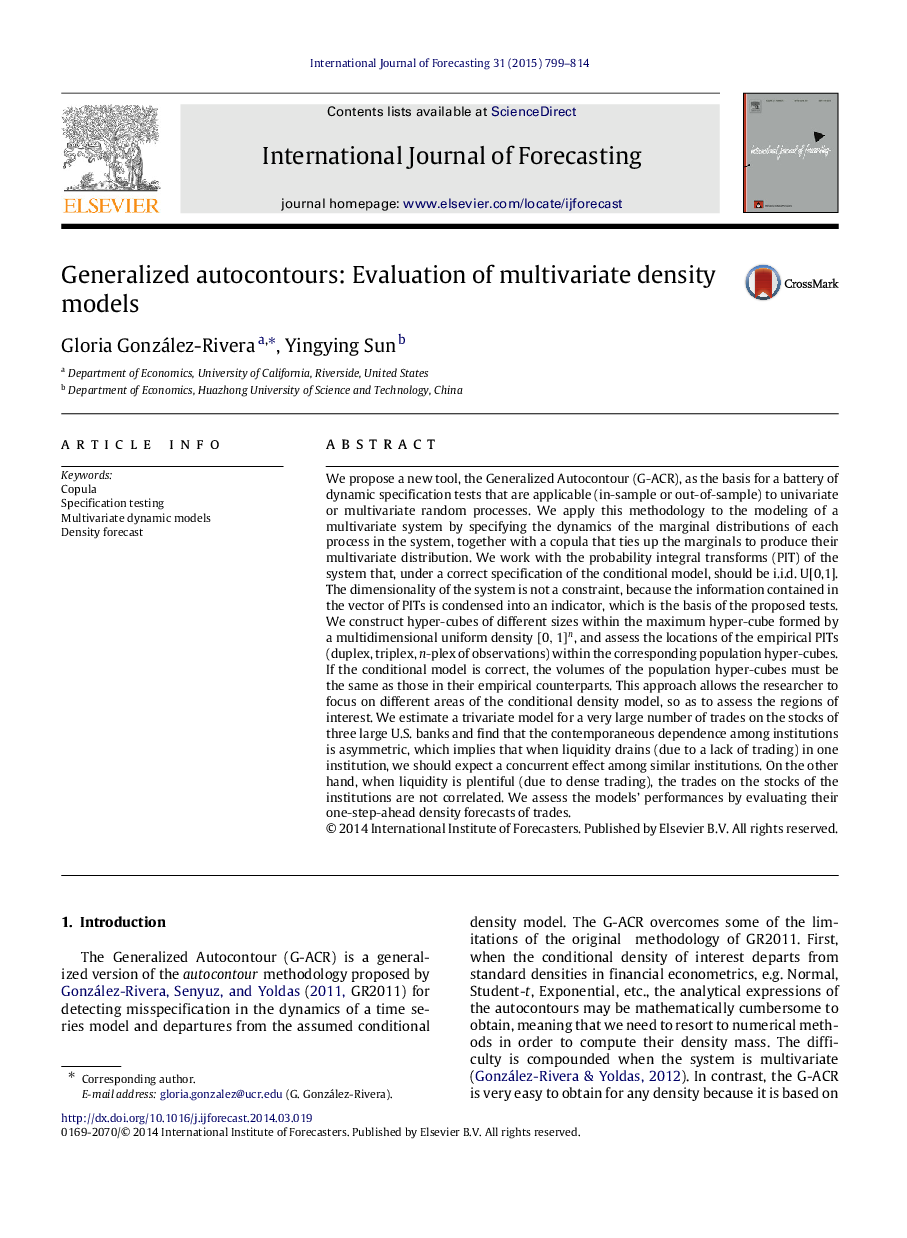| Article ID | Journal | Published Year | Pages | File Type |
|---|---|---|---|---|
| 7408380 | International Journal of Forecasting | 2015 | 16 Pages |
Abstract
We propose a new tool, the Generalized Autocontour (G-ACR), as the basis for a battery of dynamic specification tests that are applicable (in-sample or out-of-sample) to univariate or multivariate random processes. We apply this methodology to the modeling of a multivariate system by specifying the dynamics of the marginal distributions of each process in the system, together with a copula that ties up the marginals to produce their multivariate distribution. We work with the probability integral transforms (PIT) of the system that, under a correct specification of the conditional model, should be i.i.d. U[0,1]. The dimensionality of the system is not a constraint, because the information contained in the vector of PITs is condensed into an indicator, which is the basis of the proposed tests. We construct hyper-cubes of different sizes within the maximum hyper-cube formed by a multidimensional uniform density [0,1]n, and assess the locations of the empirical PITs (duplex, triplex, n-plex of observations) within the corresponding population hyper-cubes. If the conditional model is correct, the volumes of the population hyper-cubes must be the same as those in their empirical counterparts. This approach allows the researcher to focus on different areas of the conditional density model, so as to assess the regions of interest. We estimate a trivariate model for a very large number of trades on the stocks of three large U.S. banks and find that the contemporaneous dependence among institutions is asymmetric, which implies that when liquidity drains (due to a lack of trading) in one institution, we should expect a concurrent effect among similar institutions. On the other hand, when liquidity is plentiful (due to dense trading), the trades on the stocks of the institutions are not correlated. We assess the models' performances by evaluating their one-step-ahead density forecasts of trades.
Related Topics
Social Sciences and Humanities
Business, Management and Accounting
Business and International Management
Authors
Gloria González-Rivera, Yingying Sun,
